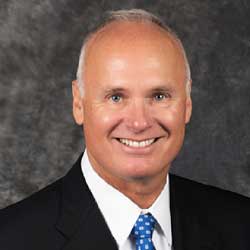Laying out expectations, increasing communications, and focusing on productivity and results versus activity volume are the keys to success.
By Tom Niehaus
Working from home has always been treated more a carrot for employees than a viable, regular alternative to office-based work. And, with that carrot has come some pretty big sticks.
Managers are often concerned that workers will be distracted by personal issues and their environment, leading to a drop in productivity – even though studies have shown productivity tends to increase overall when employees work from home.
They are also concerned that without regular, face-to-face interaction, they will lose the sense of team and the innovation that comes from chance encounters in the workplace (aka the “water cooler myth”).
These concerns have led managers to view remote working warily. Where it was allowed, some implemented draconian tactics such as installing spyware or keyloggers to monitor whether employees were focusing on their work – something that should only be done as a last resort.
Then came the COVID-19 pandemic and the overnight need for social distancing. While warehousing, manufacturing, and other industrials were less affected on the shop floor, social distancing requirements often impacted the office staff. (Although as more robotics and automation make their way into industrial companies, office staff may become more widespread in the future.)
For those affected, suddenly the question wasn’t, “Should we allow our employees to work remotely?” Instead, it was, “How do we best enable our employees to work remotely so we can stay in business?”
Proving that necessity is the mother of invention, organizations had to get very good at remote work very quickly to survive. From that came some very important lessons.
Technology plays a large role in enabling a powerful remote workforce. Employees need laptops, and organizations need a virtual private network (VPN) to ensure data remains safe. High-speed broadband is also important, especially if video conferencing will play a large role in day-to-day activities. Some employees may also need additional hardware such as monitors with bigger screens or other hardware.
Managers must also have management systems and processes in place that don’t rely on the ability to look over an employee’s shoulder or constantly “spying” on employees.
Instead, managers can use the same types of performance measures that have been used in managed service for years. Only now, the services are internal instead of external. By developing key performance indicators, communicating them to employees, and then regularly analyzing the results, organizations can determine whether quality and productivity are being maintained (or exceeded) and make adjustments as needed.

When given the right tools and technology to work remotely, employees can still meet goals and show results.
Part of the argument for office-based work is the ability to collaborate with co-workers quickly. Not just in formal meetings, but perhaps more importantly in drop-ins and chance encounters in the hallway.
While not quite as personal, technologies such as Microsoft Teams, chat, and video conferencing can enable similar types of collaboration between individuals and groups, large and small. Enterprise-wide platforms need to be established for video, file storage, workspaces, chat rooms, etc. Once the tools are in place, managers should schedule regular check-ins with individuals and teams to ensure their needs are being met and that they are comfortable with their new environment.
By encouraging employees to use these tools to work more closely together, managers can foster greater synergy across the organization and lay the groundwork for a positive workplace culture.
One valuable employee incentive for productivity is the gift of earned time. If workers complete their work in less than the time allotted, allow them to take the rest of that time for themselves. If work does not need to be completed during a specific time period (e.g., standard working hours), allow flexibility so that they can complete work at a time that is best for them. Many employees found themselves faced with school-age children at home. Allowing them the flexibility to meet their family needs and still get their job completed is a win-win. It costs the company nothing, but it can result in tremendous moral benefits.
Now that the genie is out of the bottle, it’s unlikely to be stuffed back in again. Quite the opposite – the cost savings for companies on real estate, heat, lights, travel, etc., coupled with an overall increase in productivity and employee morale may lead to telework being the preferred option for many positions – at least for the next generation.
With the right approach, telework is no longer just a carrot offered to a fortunate few, but the future of how work will get done.

Tom Niehaus
Thomas J. Niehaus
Executive Vice President Operations, North America
Tom Niehaus was named Executive Vice President Operations, North America, of CTG effective May 6, 2019. He previously worked at CTG from 1999 to 2011 and was an integral part of establishing and growing the Company’s Solutions operations. Prior to his recent appointment at CTG, Mr. Niehaus served as Managing Member of TJN Advisory, a private advisory services consulting firm. Previously, he was President and COO of Encore Health Resources, where he guided the company’s operations through a five-year period of exceptional growth from 2012 to 2017. Mr. Niehaus was named CEO of Encore in 2017 and led the company through its eventual divestiture to emids, a global provider of healthcare IT. He joined Encore in 2011.
Scott Ellyson, CEO of East West Manufacturing, brings decades of global manufacturing and supply chain leadership to the conversation. In this episode, he shares practical insights on scaling operations, navigating complexity, and building resilient manufacturing networks in an increasingly connected world.